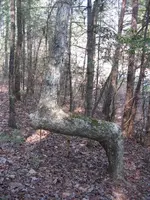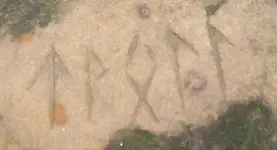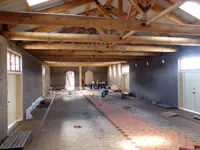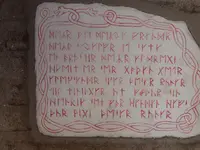During the 1960's archeologists found the site of a Norse settlement on the island of Newfoundland, Canada. The settlement dated to about 1000 AD and, as far as I know, is the earliest European settlement found on mainland North America.
Here is a picture of some runes that I have posted before. They are of the Elder Futhark writing system that was used by Germanic tribes from the 2nd to 8th centuries AD.
View attachment 1671261
I found these on a boulder, close to a prominent landmark along an old trail.
So, who put this runic inscription, at this spot? A Norseman? Maybe. If you look at the meanings of the symbols, it seems like some sort of land claim.
"Tiawaz(the god Tyr), Wunjo(joy), Opila(heritage,estate,possession), Laguz(water,lake)". The god Tyr's primary role was that of an upholder of law and justice. So it seems like some Viking is real happy that he gets possession of land, with water on it, and the blessings of the lawyer in chief.
But, you should look at the overall picture before you come to that conclusion. During the middle 1800's, this area was heavily settled by immigrants from Germany. Elder Futhark runes have been found on jewelry, amulets, tools, weapons and other artifacts. Maybe one of the German immigrants had an artifact, with these runes on them, and he chiseled them into the boulder. You can't know for sure about carvings or trail monuments, unless you have recovered artifacts, in the same area, from the same time period.













